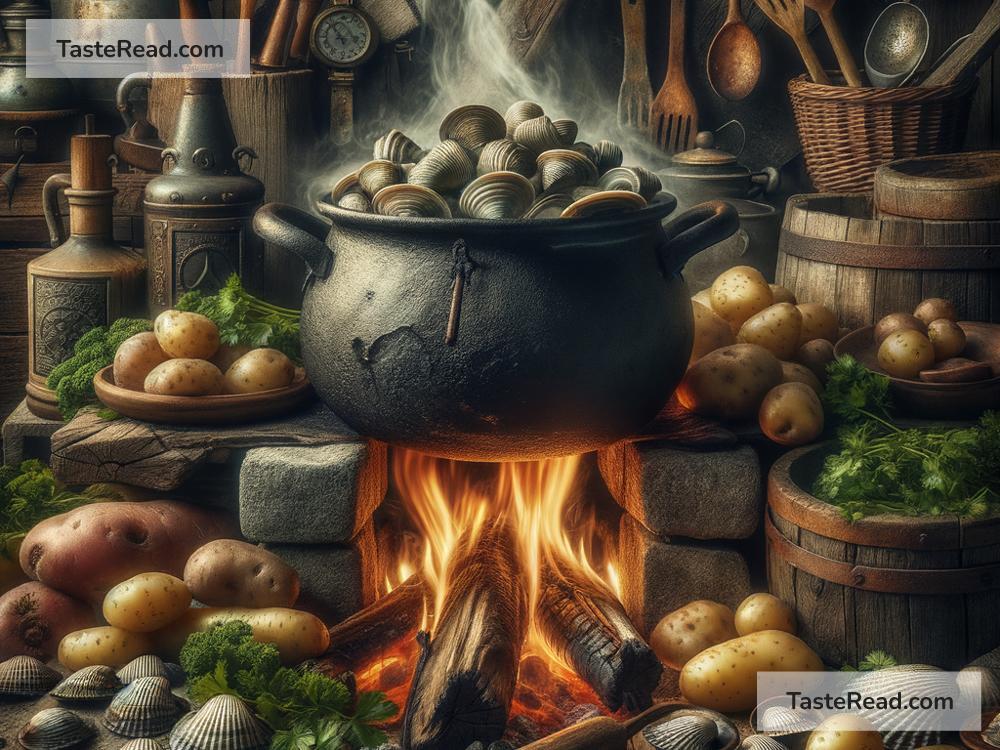Origins of the First Clam Chowder in Ancient Tales
Clam chowder is one of the most popular and comforting dishes in the United States today, but have you ever wondered where it came from? This creamy and savory soup, packed with clams and hearty ingredients, has an interesting history. It might sound like it was always part of American culture, but clam chowder has origins that trace back to ancient stories, the seafaring ways of Europe, and even the traditions of early settlers. Let’s take a journey to discover how this beloved dish came to be.
What is Clam Chowder?
Before diving into history, it’s helpful to know what clam chowder is. Clam chowder is a type of soup loaded with clams, potatoes, vegetables (like onions and celery), and a creamy or tomato-based broth. There are different versions of clam chowder, including New England clam chowder (white and creamy) and Manhattan clam chowder (red and tomato-based). No matter the recipe, clam chowder is cherished for its hearty, coastal flavors.
Ancient Tales of Seafood Stews
Although clam chowder as we know it today didn’t exist in ancient times, the idea of seafood soups or stews goes back hundreds, even thousands, of years. Long before modern recipes, people living near oceans and rivers relied on seafood for food. Communities in ancient Greece, Rome, and other parts of Europe made hearty stews using fish, shellfish, and local vegetables. These early soups combined simple ingredients to create meals that were filling and nutritious. While clams weren’t necessarily the focus, their inclusion in seafood dishes wasn’t unusual for coastal cultures.
In medieval Europe, shellfish like clams were plentiful and easy to gather. They didn’t require complicated tools or techniques for fishing, making them an affordable food for people of all social classes. Stories suggest that waterside dwellers often boiled shellfish with vegetables and herbs to make simple stews. These ancient “proto-chowders” may have laid the groundwork for what would later become clam chowder.
The Influence of French and English Fishermen
The word “chowder” itself is believed to come from the French word chaudron, which means “cauldron” or “pot.” French fishermen, particularly those from Normandy and Brittany, would make large pots of seafood stews aboard their ships. These stews often used ingredients like fish, shellfish, potatoes, and onions, along with thickening agents like cream. The fishermen shared their recipes with others they encountered along their voyages.
Similarly, English fishermen had their own versions of seafood soups. When settlers and explorers from Europe traveled to the Americas, they brought not only their customs but also their cooking techniques. Recipes for seafood-based dishes may have come along with them, slowly evolving depending on the ingredients they found in the New World.
The Arrival of Clams in America
Clam chowder became more distinct when European settlers arrived in North America. In the 16th and 17th centuries, early colonists on the East Coast of the United States found an abundance of clams along the shores. Native peoples introduced settlers to clamming techniques, teaching them how to gather clams from the sand with their hands or using simple tools. Clams became a vital source of food due to their availability and the ease of harvesting them.
With clams now a popular ingredient, settlers started to include them in their recipes. Soups made from fish and potatoes were already common, so adding clams to the mix seemed natural. These soups were modest meals, prepared to use up what settlers could find locally. Over time, the flavors and methods for making clam-based stews developed into the early versions of clam chowder.
A Colonial Favorite
By the 18th and 19th centuries, clam chowder had become a much-loved dish in New England, a coastal region in the northeastern United States. The area was known for its vast supply of seafood, especially clams. New England was home to many immigrants, including French, English, and Irish settlers, who brought their culinary traditions with them. These influences combined into something new: a creamy clam chowder with chunks of potatoes, onions, and sometimes pork fat or bacon.
At this time, New England clam chowder was prepared mostly at home and in small seaside villages. Boats full of clams arrived onshore, and families would cook them with what they had available. Over the years, restaurants began serving the dish and elevating its status.
Manhattan Clam Chowder and Regional Differences
Interestingly, as clam chowder grew more popular, different styles emerged. While New England clam chowder uses milk or cream to achieve its signature white color, Manhattan clam chowder replaced cream with tomatoes for a brighter, red soup. Manhattan’s version was possibly influenced by Italian and Portuguese immigrants living in the area, who regularly used tomatoes in their cooking.
Both types of clam chowder became iconic in their regions, leading to debates about which is better. Regardless of preference, clam chowder became a symbol of coastal living and history.
A Dish That Stands the Test of Time
Clam chowder’s beginnings may come from ancient tales of seafood stews, but it has grown into a modern comfort food loved by millions. Whether you’re enjoying the creamy New England chowder or the tangy Manhattan version, clam chowder carries the memory of centuries of cooking traditions from near and far.
So next time you dig into a bowl of clam chowder, remember that you’re tasting a piece of history—a dish born from the sea, shaped by travelers, and perfected by generations. It’s much more than just a soup; it’s a story of exploration, creativity, and cultural exchange.


